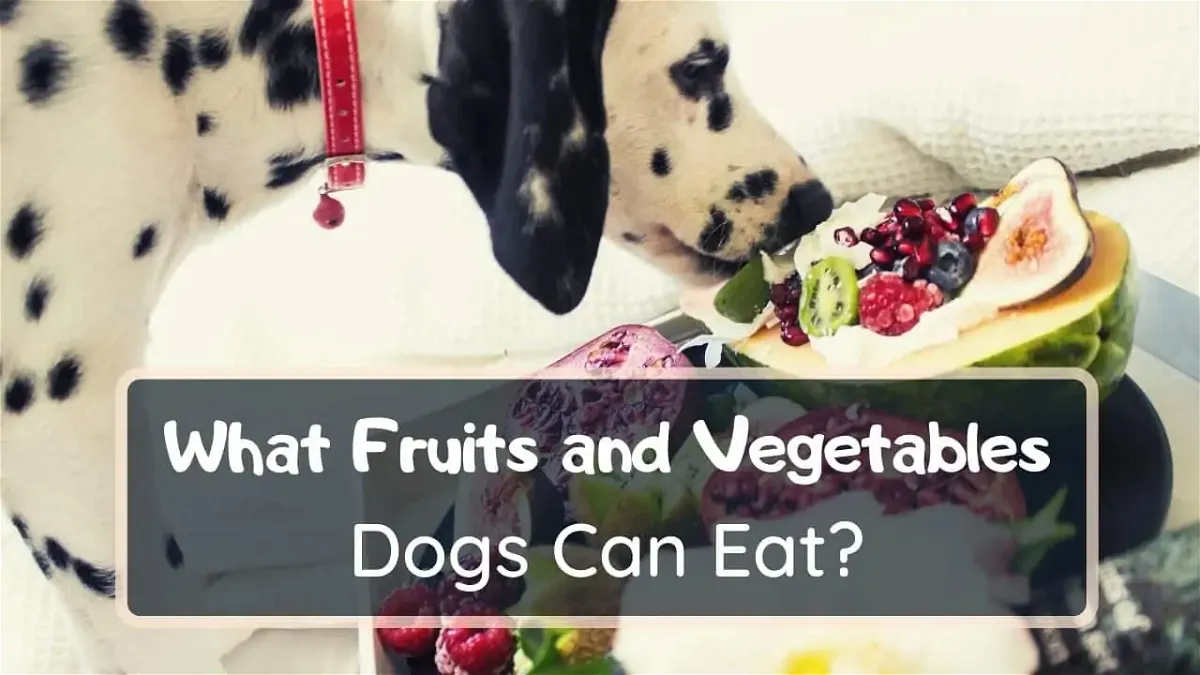
Check out my fully updated guide about the best and worst fruits for your dog in 2022.
It is completely understandable and even expected that we want the best for our dogs. Pet care is a crucial topic for me, and the most important part of that is proper nutrition. I guess it’s not unfamiliar to you fact that vegetables and fruits are very beneficial for dogs.
However, some harmful alternatives are worth avoiding. I want you not to be confused, so I’ve put together a detailed list for you where you can find the best vegetables and fruits dogs can eat. I will also include the harmful options.
Let’s get started!
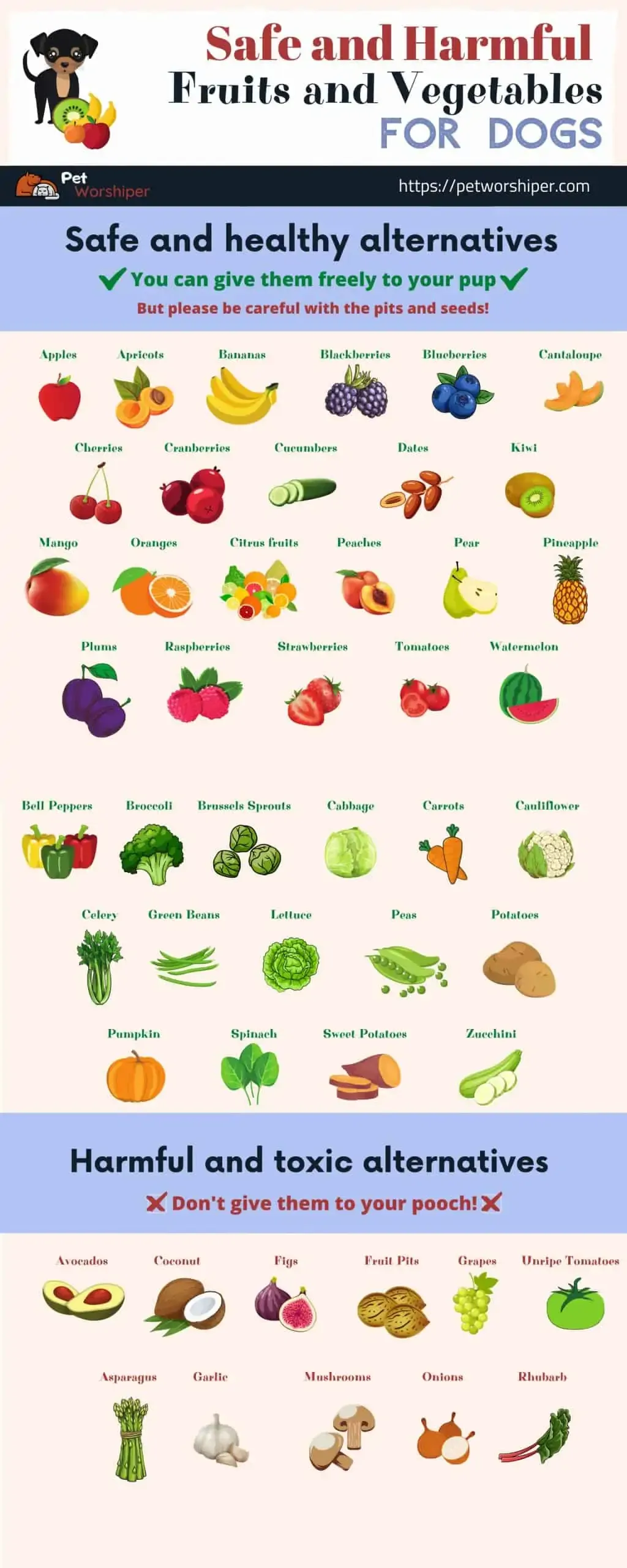
Finding the best diet for your dog is not easy. You have to consider several aspects, e.g., activity, breed, age, health condition, etc. If you want to make the best decision possible, check out my comprehensive guide on how to choose the best dog food.
Safe and healthy fruits for your dog
Can dogs eat fruit? Yes, because this can have many benefits in your canine’s diet. Below you will find alternatives that you can confidently give to your pup. I will also mention the malicious versions later. Fruits will be in alphabetical order, making it easier for you to search.
Please read the reviews of the fruits on the list carefully. This is because some fruits have dangerous parts (seeds, pits, green parts, etc.) that can cause various health issues in dogs. In general, the flesh of the following fruits can be considered safe.
Apples
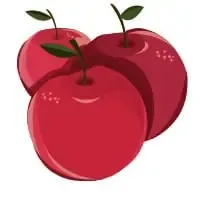
Of course, dogs can eat apples. These fruits are excellent choices if you want to turbo-charge your dog’s immune system.
They have a high content of vitamin A and C and have a good effect on the digestive system due to healthy dietary fiber.
In addition, they contain antioxidants such as quercetin. This can help alleviate allergic reactions and has an additional beneficial effect on intestinal health.
And yes, the rumor is true. Apple peel is a concentrated source of nutrients. Therefore, you should leave it on this valuable fruit if you give it to your dog.
Some advise that apple core and seeds are worth removing. Well, apple seeds contain cyanide, but the amount is practically negligible. However, if it reassures you, feel free to give your puppy apples without seeds.
Apricots
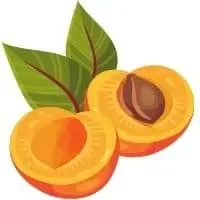
Apricot is an excellent treat for dogs. It contains a lot of fiber, minerals, and beta-carotene.
The latter is a very potent anti-cancer antioxidant.
However, it would be best to avoid the pit, leaves, and stem of the fruit. Not only can they pose a choking hazard, but they are even toxic due to their cyanide content.
Bananas

Bananas are safe for dogs. They are great sources of vitamins, biotin, potassium, copper, and fiber.
Plus, their sodium and cholesterol content is low, so if your dog is on such a diet (low sodium), you may want to consider this fruit even more in his diet.
However, bananas are high in sugar and starch. This can create a favorable environment for bad gut bacteria, candidiasis, and yeasts.
So if your pet is prone to yeast infection, then bananas are not the best choice.
The situation is similar if your dog is obese. In this case, although you don’t have to eliminate this fruit from your pup’s diet, you do have to pay attention to the amounts.
The banana peels are non-toxic but don’t give them to your pooch because of the danger of bowel obstructions.
Blackberries
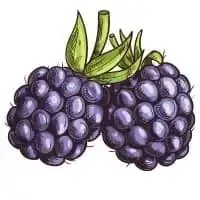
Blackberries are extremely healthy and safe for dogs. Like apples, they are high in vitamins A and C and have antioxidant content.
But they also contain vitamin K, manganese, and plenty of fiber.
These nutrients are great for helping your dog have a healthy immune and intestinal system.
Blueberries
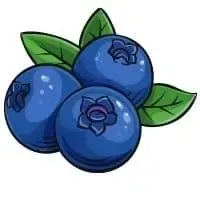
Blueberries are not only safe for dogs but also very healthy.
These delicious fruits are rich in vitamins, antioxidants, and phytonutrients.
This not only strengthens your pooch’s immune system but is also effective in preventing cancer, cell, and tissue damage. Be sure to consider this fruit as a treat.
Cantaloupe

Yes, dogs can eat cantaloupe. It is extremely nutritious (vitamins A, B, and C).
Plus, its moisture content is also high (just like watermelon), so it’s a good choice if your pet needs extra hydration.
However, you need to be careful with the sugar content of cantaloupe. Sugar promotes the growth of yeast bacteria and can be harmful to diabetic dogs. In small quantities, however, this fruit is a great treat.
Cherries

Cherries are fruits dogs can eat, and high in vitamin C. However, pits can cause bowel obstructions, and their cyanide content is toxic to dogs.
Remove the pits and add only the fruit flesh to your pup.
Cranberries

Your dog can eat cranberries safely. What’s more, it’s a very healthy fruit. It is rich in vitamins, minerals, fiber, and antioxidants.
Therefore, it helps prevent cancer and promotes the immune system.
Besides, it is effective in treating urinary tract infections. The only problem with this precious fruit is that not all dogs love its tartness.
Cucumbers
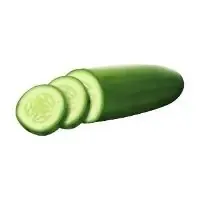
Dogs can eat cucumber. Half a cup of this fruit contains only 8 calories, making it a perfect treat for dogs who need to lose weight.
It contains vitamins C, K, B1, potassium, copper, magnesium, biotin, and healthy fibers. It also has a high moisture content, so it hydrates perfectly.
And antioxidants and polyphenols help prevent cell damage and cancer.
As with many other fruits and vegetables, cucumber peel is very nutritious, so be sure to leave it on when you serve some of this veggie for your dog.
In the ordinary sense, cucumber is considered a vegetable. However, it is worth noting that this plant botanically belongs to the fruits.
Dates
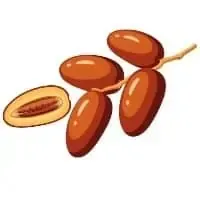
The flesh of dates is safe. However, you need to pay attention to the quantity as they are high in sugar.
And be sure to remove the pits because they cause digestive problems and also contain cyanide.
However, small amounts of this fruit may also be a suitable treat.
Kiwi
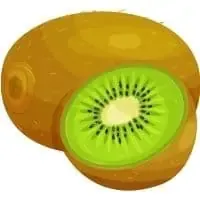
This fruit is a favorite of many people and is also an extremely healthy alternative for dogs. It is very high in vitamin C, potassium, and antioxidants.
These nutrients prevent and fight cancer, help with cell regeneration, and promote the immune system.
Also, kiwi has a good effect on the skin health and digestion of dogs.
Mango
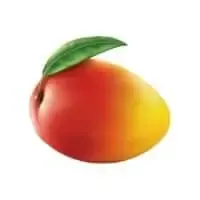
Every dog loves the sweet taste of mango. This special fruit is not only delicious but full of valuable vitamins.
Examples are vitamins A, B6, C, and E. Also, it contains potassium and alpha, and beta carotene, respectively.
However, do not give the hard pit to your dog under any circumstances. On the one hand, because of the cyanide content, on the other hand, what is even more dangerous is the choking hazard.
Not all dogs can digest mango peel properly, so it’s best to give the flesh to your pup.
Due to its high sugar content, this fruit should only be an occasional treat.
Oranges
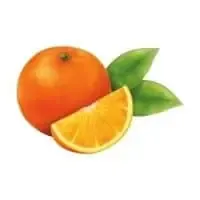
Although not all dogs like the strong scent of citrus, oranges are healthy and safe fruits. They are high in vitamin C, potassium, and fiber.
Also, they contain flavanones, which also have anti-inflammatory and weight management properties.
Only give orange flesh to your dog because the peel is difficult to digest and can cause obstructions.
Other citrus fruits
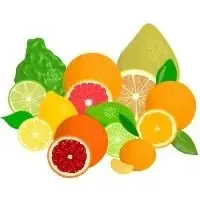
Like oranges, your dog can also eat grapefruits, limes, lemons, tangerines, mandarins, and clementines.
These fruits are also high in vitamins, minerals, and fiber. However, don’t force them if your dog doesn’t like their citrusy scent and taste.
Avoid large amounts because citrus essential oils can cause problems in the digestive system of dogs.
Peaches

Yes, dogs can eat Peaches.
Peaches are high in fiber and vitamin A. The latter can provide a great treatment against infections.
However, pits are also a danger with this fruit. This is because of their high cyanide content and because they can cause suffocation or bowel obstructions. There is no problem with the flesh of the fruit along with the peel. Avoid canned versions due to high sugar content.
Pears

Pears are excellent choices for dogs because they are high in vitamins (C, K), minerals (copper), antioxidants, and fiber.
According to experts, eating pears reduces the chances of developing a stroke by 50%.
Like apples, pear seeds contain cyanide but in negligible amounts. However, if you wish, you can remove them before giving your dog this fruit as a treat.
Pineapple
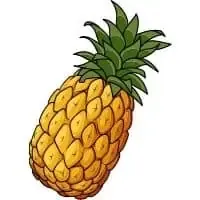
Pineapple is also one of the fruits dogs can eat, and is very healthy for dogs. It contains a lot of fiber, vitamins C and B, as well as minerals and bromelain.
The latter is a digestive enzyme that helps in the absorption of proteins.
Give pineapple to your dog the same way you would eat this delicious fruit. Without skin and crown, and you should also cut it into little pieces.
Plums
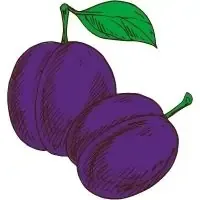
Many people say that plums should not be given to dogs. That in itself is a false statement. Plums are healthy for dogs.
But many dog owners are lazy to remove their pits.
Not only do they pose a choking hazard, but they also contain cyanide. The flesh of the fruit is considered safe.
Raspberries
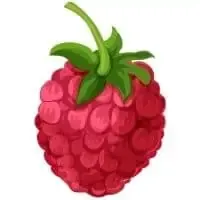
Raspberries contain valuable micronutrients such as antioxidants, vitamin C, manganese, and dietary fiber.
Due to their anti-inflammatory properties, these fruits are very good for senior dogs with joint problems.
However, you should know that they contain a tiny amount of natural xylitol. This sweetener is extremely toxic to dogs. Raspberries don’t have much of this compound, but for safety’s sake, don’t give too much of this fruit to your dog.
Strawberries
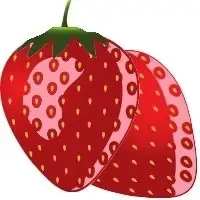
I think every person loves strawberries. Just like dogs.
Delicious juicy, sweet, not to mention full of antioxidants, vitamin c, fiber, but even a certain enzyme that helps dogs whiten their teeth.
Strawberries have a higher sugar content than other berries. For this reason, we only give them moderated amounts to obese or diabetic dogs.
Tomatoes
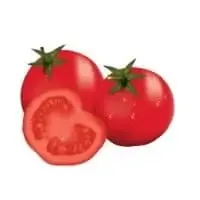
Tomatoes are a bit controversial for dogs because of their solanine content. However, in ripe tomatoes, the levels of this compound are low and can be considered safe.
Exceptions to this are dogs with some form of inflammatory disease, as minimal amounts of solanine can exacerbate these conditions.
So avoid unripe tomatoes as well as green parts of tomatoes from your dog’s diet. Incidentally, this fruit in its ripe form is full of antioxidants, vitamins, and fiber.
Watermelon
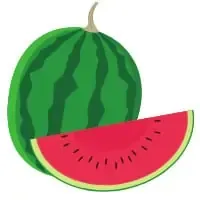
Watermelon can be a healthy and delicious treat for your puppy. Its high content of vitamins B6, A, C, and potassium supports canines’ immune system.
Also, its moisture content is extremely high, making it a perfect choice to keep your dog hydrated. And lycopene is an essential antioxidant.
Watermelon rinds and seeds can cause intestinal blockage, so you should only give the flesh to your canine companion.
Best vegetables for dogs
So what vegetables dogs can eat? Now come the alternatives that are not only safe but very healthy for canines. You can feel free to give these to your pup as a treat.
Bell peppers

Bell peppers are excellent sources of vitamins C, B, E, and K, beta-carotene, fiber, and antioxidants.
And because of the crunchy texture, it can be an enjoyable chewing experience for your dog.
The point here is the moderated amount because, in some dogs, this low-calorie vegetable can cause stomach issues.
Broccoli
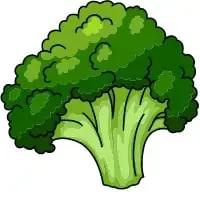
Surely you know that broccoli is very healthy for people.
It’s also nutritious and safe for your dog. High in fiber, vitamin C, and manganese, this vegetable is very valuable.
However, you should know that it contains isothiocyanates. Some dogs may be sensitive to this compound, and there is a risk of gastric irritation. For this reason, give moderate amounts of broccoli to your dog and not regularly.
Brussels Sprouts
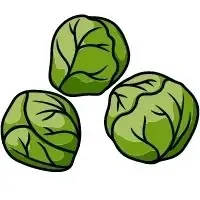
Brussels sprouts are rich in vitamins and antioxidants, which increase the efficiency of the dog’s immune system.
However, give your dog a moderation of them, as they can cause excessive gas production in large quantities.
Cabbage
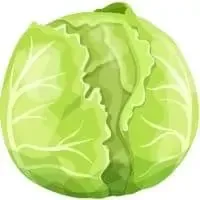
Cabbage can also increase gas production in your dog’s intestines.
Nevertheless, it can be considered a safe and healthy plant in moderated quantities. It has plenty of vitamins, minerals, and antioxidants.
Carrots

When it comes to vegetable treats, carrots are guaranteed to be one of the best choices. They are low in calories but high in fiber and beta carotene.
Plus, because of the crunchy texture, it will be fun for your dog to chew them and help keep his teeth clean.
I think these are enough reasons to feed your dog this wonderful vegetable.
Cauliflower
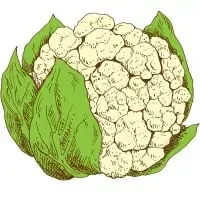
This vegetable is an excellent treat for your dog in a cooked or raw form too. It is high in vitamins and minerals, so it helps relieve inflammation and supports the immune system.
It can even help treat arthritis in senior pets. Its fiber content prevents digestive problems.
However, in larger quantities, this effect may be just the opposite. Therefore, please give it to your dog in small amounts, without the stem and leaves.
Celery
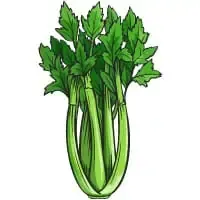
Celery is an excellent vegetable for people and pets. Due to its high content of vitamins B, A, C, and K, as well as folate, potassium, and manganese, it promotes your pup’s immune system.
And because of antioxidants and other micronutrients, it can prevent or fight cancer and support heart health.
If all that wasn’t enough, it also provides fresh breath for your doggy.
Green beans
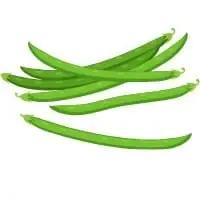
Green beans are also a safe and healthy option. They are rich in vitamins, minerals, and fiber.
You can give them to your dog in any form: steamed, canned, chopped, or raw. These are all good.
However, keep them plain. Avoid oil, spices, or salt during preparation. Choose low-salt or salt-free versions from the canned version.
Lettuce
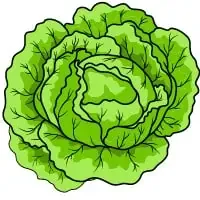
Lettuce is a low-calorie, high-fiber vegetable. It contains vitamins such as vitamins B, A, and K and minerals such as calcium, phosphorus, and magnesium.
Therefore, it can properly support your dog’s immune system.
Peas
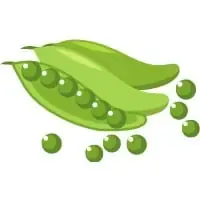
Peas are a good source of carbohydrates and rich in fiber, vitamins (A, B, K), and minerals (iron, zinc, potassium, magnesium).
They are also high in protein, but it is better if animal meats are the main protein source in your dog’s diet.
Fresh and frozen peas are also good choices. For the canned version, you need to pay attention to the sodium content. There are several peas, such as snow peas, sugar snap peas, garden peas, and English peas. All of these can be considered safe and healthy for pets.
Potatoes
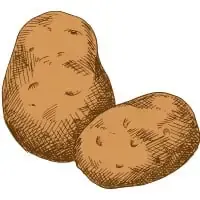
Potatoes are a common vegetable in dog food, especially when it comes to a grain-free diet. They contain valuable nutrients such as vitamin C, potassium, and fiber.
However, you must never give your dog raw potatoes or part of the potato plant. This is because they have a very high solanine content, which is toxic to dogs.
Pumpkin

Pumpkin is an excellent source of nutrients and a common ingredient in premium dog foods. Its high fiber content is good for both diarrhea and constipation.
It also contains many vitamins (K, C, E) and minerals (potassium, iron, copper, manganese).
Spinach
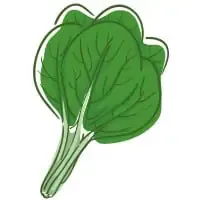
Spinach is a true superfood in the diet of both humans and pets.
It is rich in vitamins and minerals as well as valuable antioxidants.
However, please do not give your pet large amounts because of the oxalic acid in it. This can lead to kidney problems in the long run with high intake. Of course, sometimes a few servings of spinach can’t hurt your pup.
Sweet potatoes

In cooked form, sweet potatoes contain beneficial nutrients for your dogs, such as vitamins C and B6, beta-carotene, potassium, and dietary fiber.
They are great for supporting the functioning of the immune and digestive systems.
Zucchini
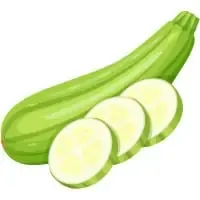
Yes, dogs can eat zucchini. This vegetable is a great source of fiber and vitamin C, potassium, and magnesium. Plus, dogs love the taste.
Your four-legged friend can eat it raw or cooked.
Dangerous fruits for dogs
As you can see, the list of safe and healthy fruits is long enough. The health benefits of these are invaluable. However, there are fruits that you better avoid from your dog’s diet. You can read about these below:
Avocados
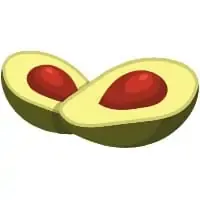
Never feed your dog avocados. This fruit contains a compound called persin. It is toxic to dogs.
Symptoms may include vomiting, diarrhea, and abdominal pain, or other issues. Pay attention to these signs if your pet accidentally ate avocado.
The pit and peel of this fruit contain plenty of persin. Its flesh contains less, though not worth the risk. The point is if you want to turbocharge your furry friend’s nutrition with some plant, don’t have avocado as your first idea.
Coconut
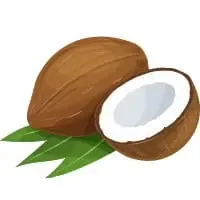
Well, chances are you find it weird that coconut is here. Many pet owners have used coconut meat and especially coconut oil for years.
This is because the oil in this fruit contains MCT oil, which has many beneficial properties.
However, you should know that 50% of these MCT oils are lauric acid, which does not have a very good effect on dogs’ health (and people). Besides, 80% of coconut oil is saturated fat, which in large quantities can cause many health problems. These are confirmed by quite recent research.
I recently wrote a detailed article about coconut oil and dogs; I highly recommend that you read it.
Figs
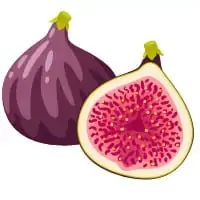
Figs are not specifically toxic to dogs, but only moderate amounts are allowed. Its high fiber content can cause diarrhea, and its fucosin and ficin content can irritate dogs.
Signs of this may include vomiting, diarrhea, or excessive drooling.
Experts say a maximum of one or two eye figs a dog should consume per week. My advice is that since this is a fairly questionable fruit, look for another alternative.
Fruit pits, seeds, and stones

Although these are not fruits, and I have referred to them several times in my article, I still feel I need to mention them again.
The pit or seed of a lot of fruits (especially stone fruits) is dangerous due to the risk of suffocation on the one hand and the cyanide content on the other. Pay attention to these.
Grapes and raisins
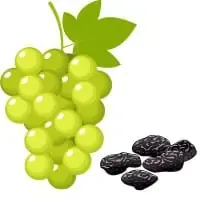
Grapes and raisins are some of the most damaging things you can give your dog. Avoid feeding your dog these fruits!
Researchers have not yet figured out the exact cause, but grapes can lead to severe kidney failure and death. And this is independent of the dog’s breed, sex, and age.
Unripe tomatoes
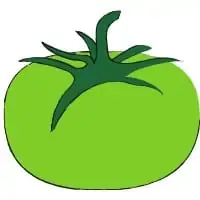
As I mentioned earlier, ripe tomatoes are safe and healthy for canines. But can dogs eat unripe versions?
The answer is no because they contain a lot of solanine. It is vomiting, diarrhea, hypersalivation, loss of appetite, drowsiness, and other symptoms.
Unbeneficial vegetables for dogs
As with fruits, there are vegetables that you should not give to your dog. These are listed below:
Asparagus
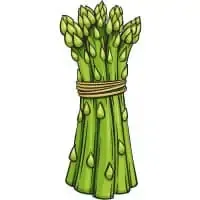
Asparagus is not necessarily harmful to dogs. However, you may want to avoid feeding your dog this vegetable.
On the other hand, raw is practically inedible, and when cooked, it loses a significant part of its useful nutrients. Its fiber content is what makes it beneficial.
However, if you want to add extra fiber to your dog’s diet, there are much, much better vegetables for it.
Garlic
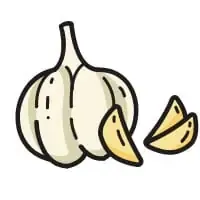
Garlic contains thiosulfate which is harmless to humans. However, this compound damages red blood cells in dogs, causing hemolytic anemia.
Symptoms of this may include vomiting, diarrhea, loss of appetite, abdominal pain, depression, lethargy, weakness, rapid breathing, jaundice, and dark urine.
Mushrooms

The situation with mushrooms is that many varieties are dangerous to dogs. You should definitely avoid wild mushroom species. Commercially available white mushrooms are harmless to dogs.
The other problem, however, is that mushrooms are not usually served in plain form. Therefore, a lot of oil, salt, and other spices can also be harmful.
It is better to choose some other vegetable for your doggies, such as carrots or green beans.
Onions
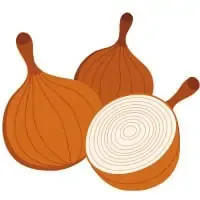
Onions, like garlic, contain a compound that also causes anemia in dogs. (N-propyl disulfide is the name of the compound).
Experience has shown that these vegetables are less dangerous than garlic, yet, it is better to avoid them.
Rhubarb
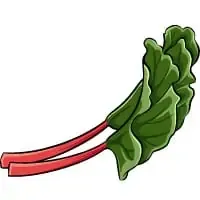
The edible part of this plant can cause various stomach upset in dogs. What is even more dangerous, however, is the leaves.
This is because they contain large amounts of oxalic acid, which can cause tremors, kidney failure, and coma.
Related “Can Dogs Eat” Guides:
Useful tips about giving fruits and vegetables to your dog
So now you know which fruits and veggies you should give your dog. Here are some helpful tips to make plant-eating even safer for your four-legged friend.
- Introduce new fruits or veggies slowly and gradually: The digestive system of dogs favors consistency. Whatever dietary change is made, it must happen slowly and gradually. If there is anything new in your dog’s diet, monitor for any changes.
- Only one at a time: Maybe certain fruits or vegetables are safe for dogs; you may not know how your pup will react to novelty. Therefore, try only one type at a time. This makes it much easier to eliminate problematic fruits or vegetables from the diet.
- Avoid large amounts: Remember, fruits are high in sugar and/or starch. Therefore, they can give up to 10% of your dog’s diet. You don’t have to be so strict on vegetables, but high fiber content can be a problem for some dogs. A solution for this can be a gradual increase and continuous monitoring.
- Strive for fresh or frozen form: This is because these forms have the highest nutritional value of fruits and vegetables. It would help if you also looked for organic products as they are not contaminated with toxins dangerous to dogs.
Dogs can eat fruits and vegetables
So can your dog eat fruits and vegetables? As you’ve seen, fruits and vegetables can be great supplements to a dog’s diet. Vitamins, minerals, antioxidants, and fiber are key to supporting the immune system and digestion. However, there are questionable and downright dangerous alternatives that you need to know exactly. I am confident that my article has helped you decide which fruits or vegetables you can give your dog as a healthy treat.
Remember, if your pet has any unusual symptoms, see a veterinarian right away!
And if you’re curious about human food that’s safe and unsafe for dogs, read my article on that too.

